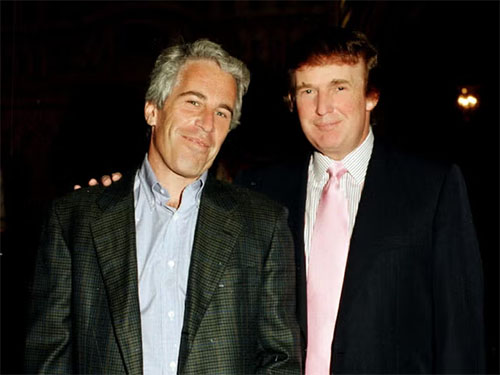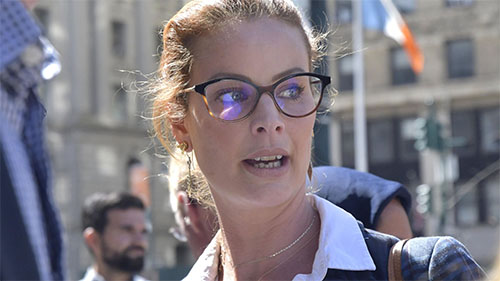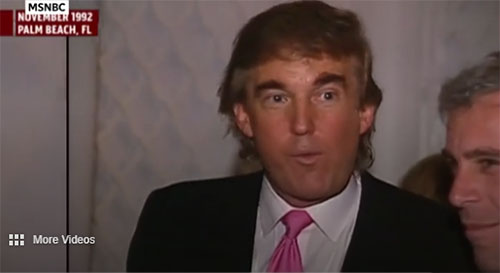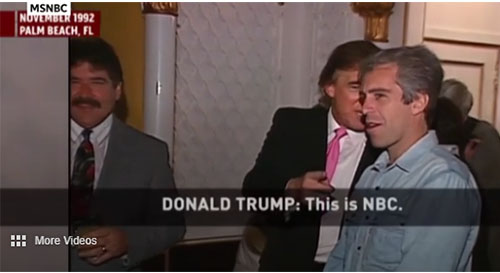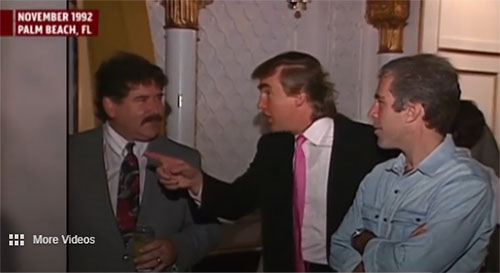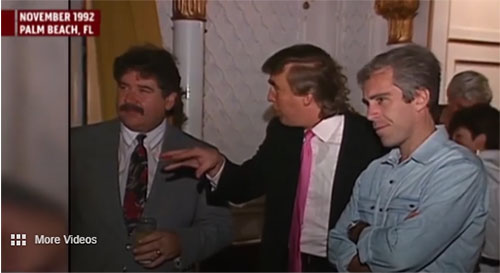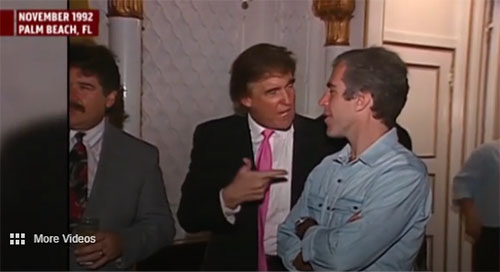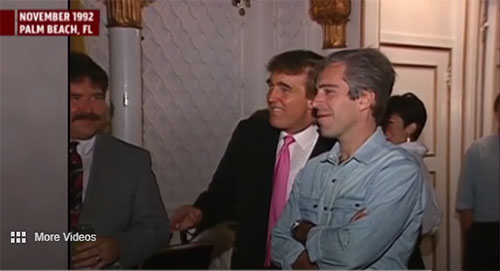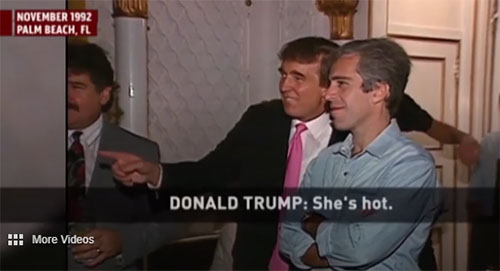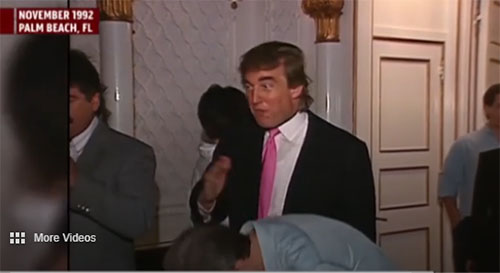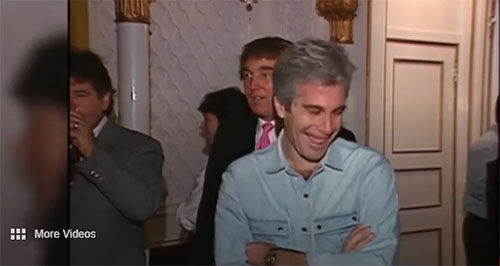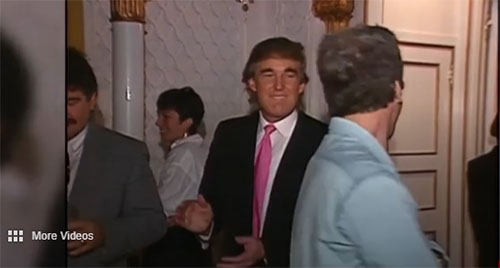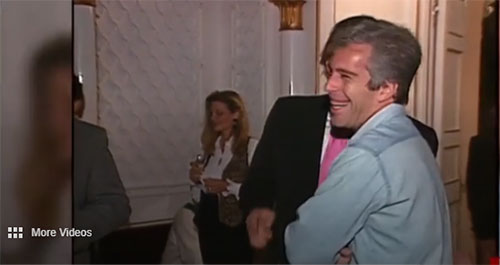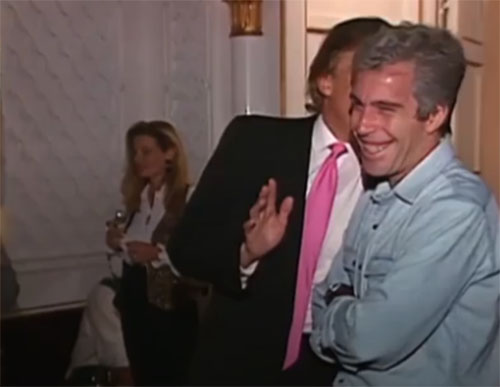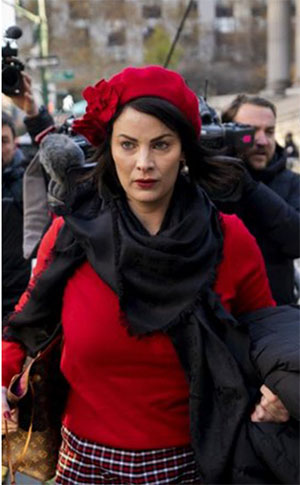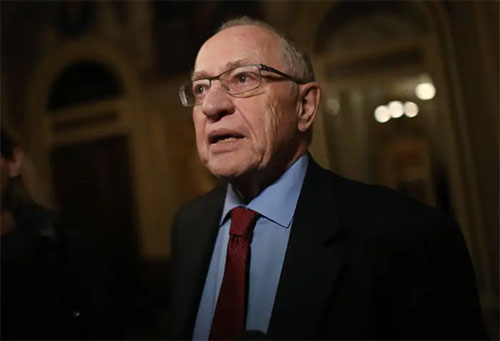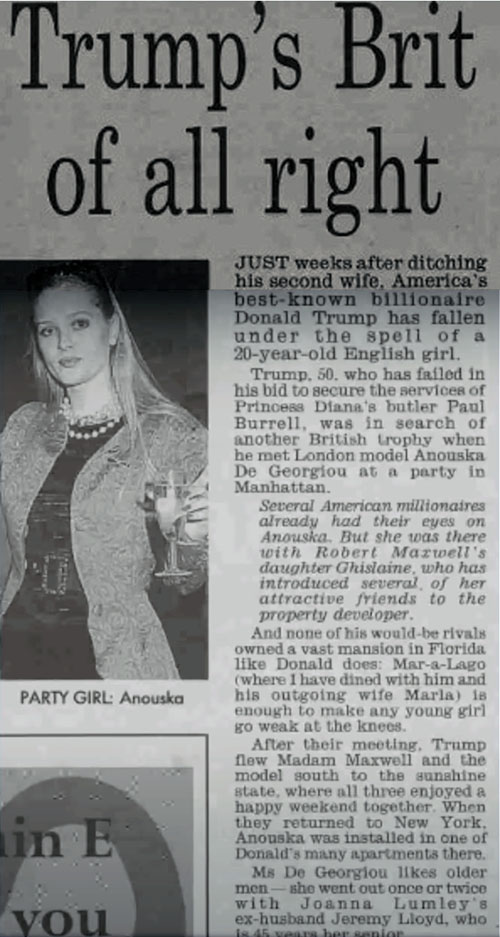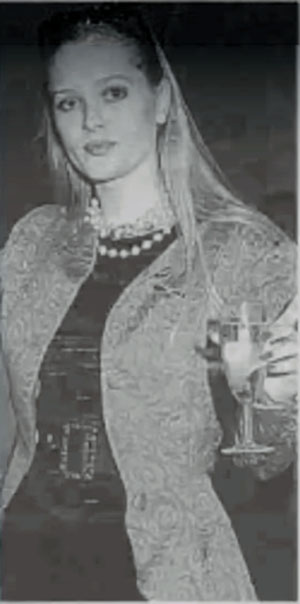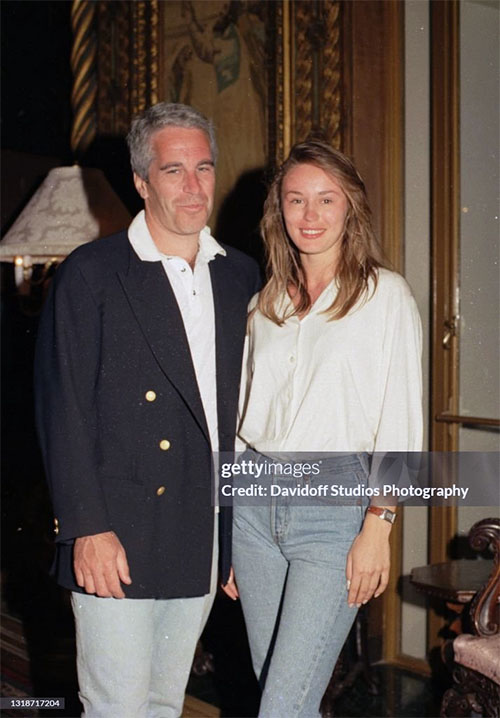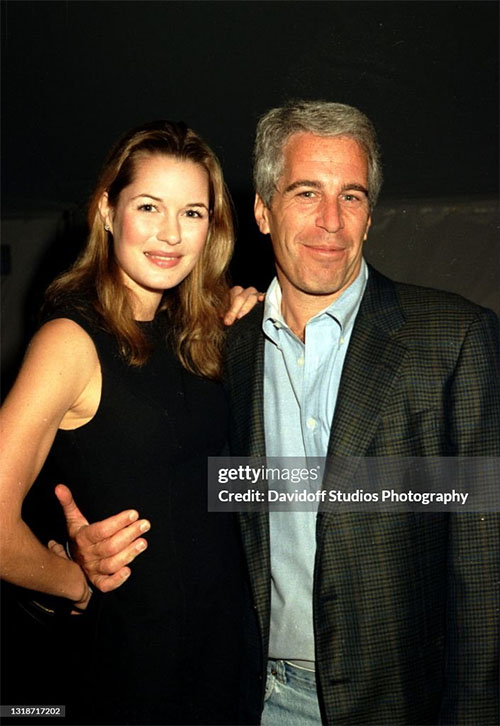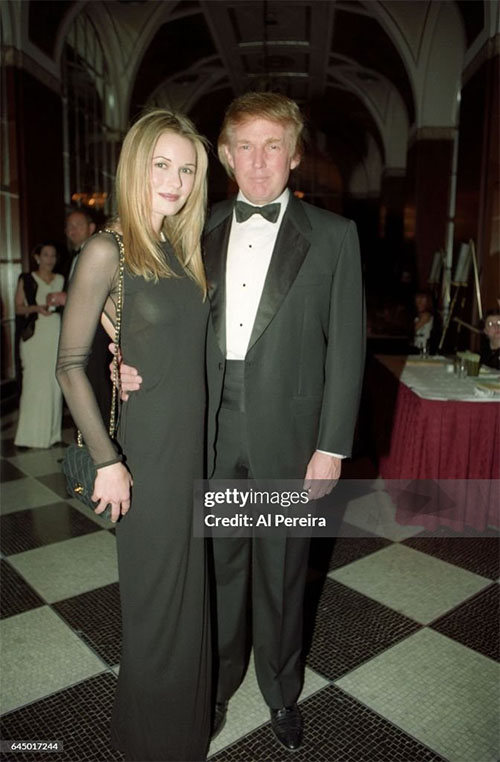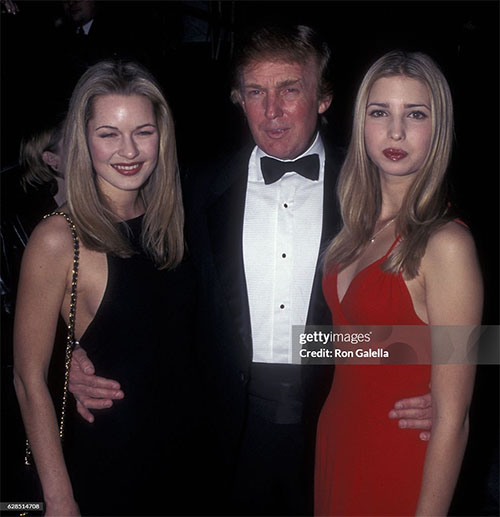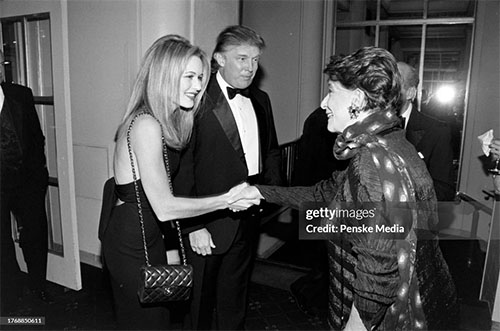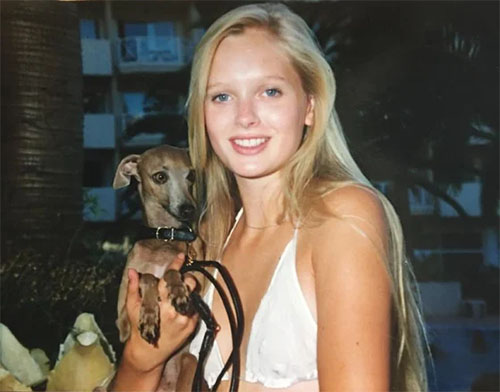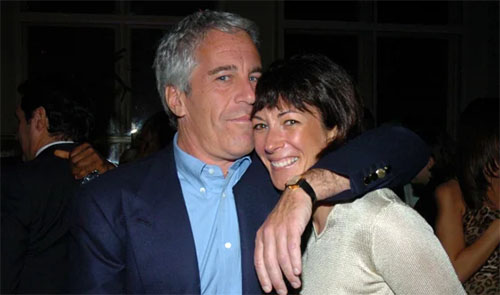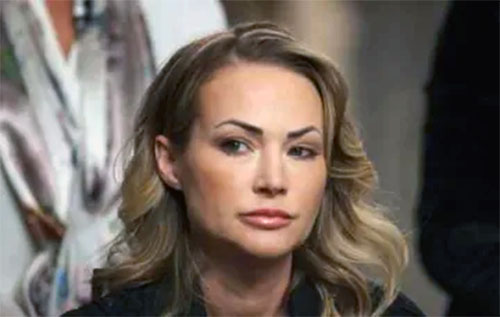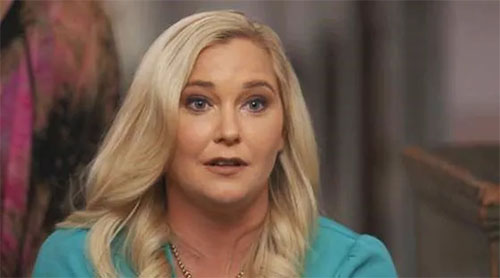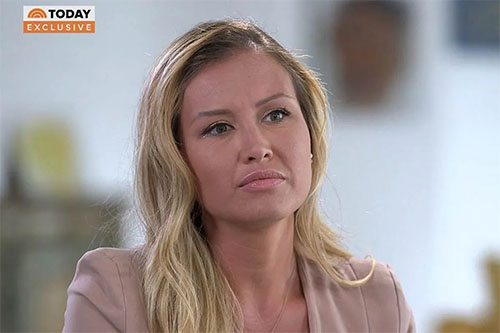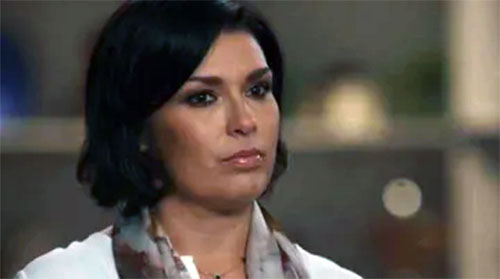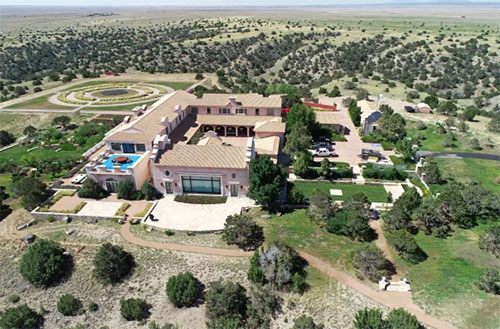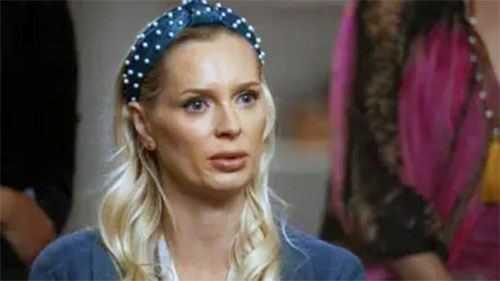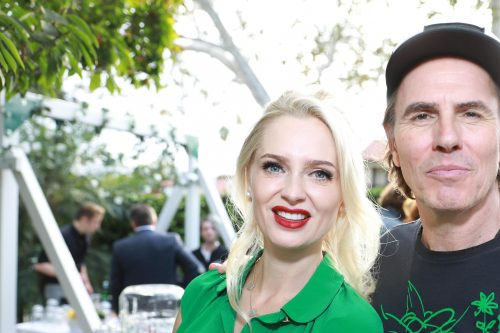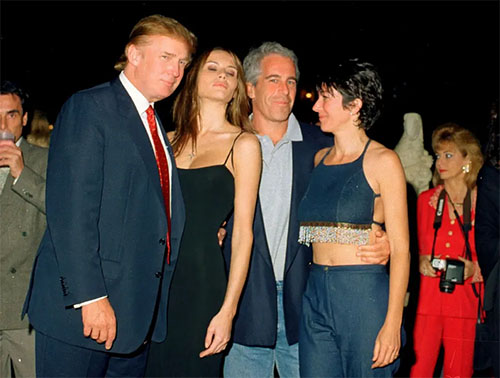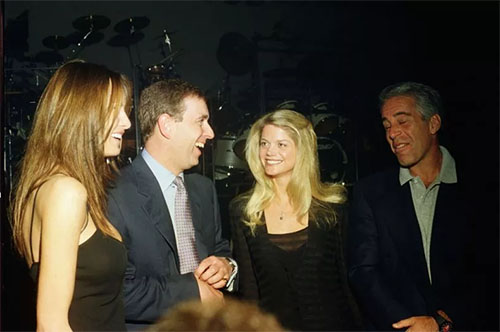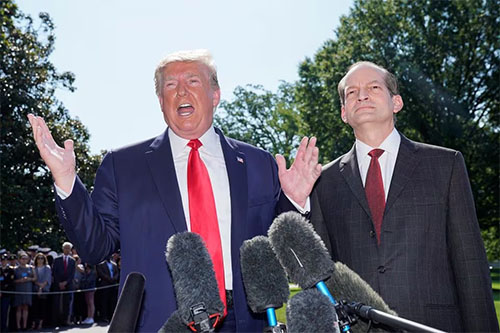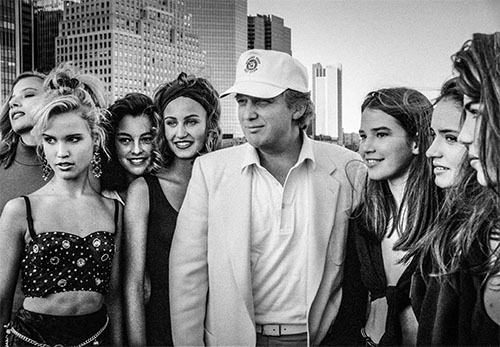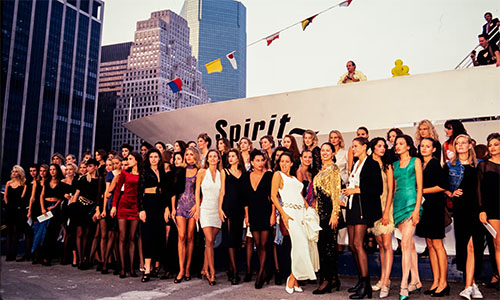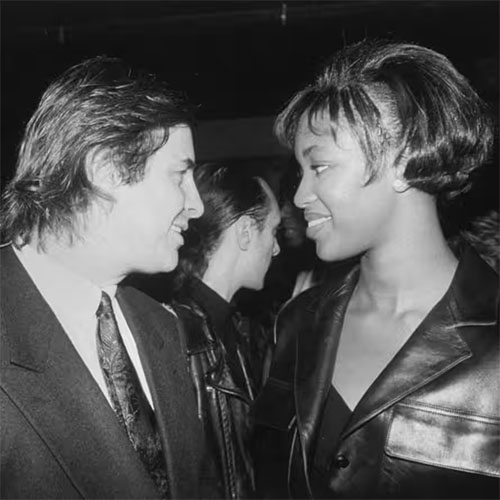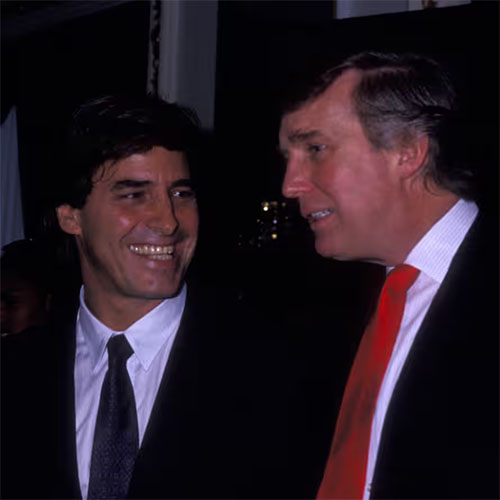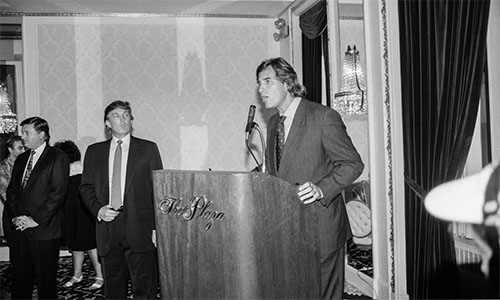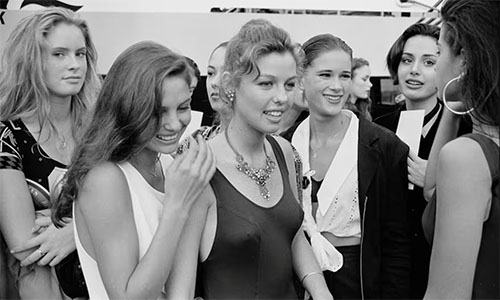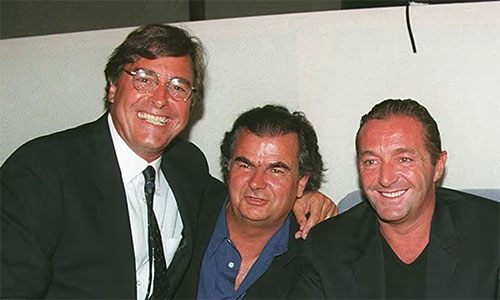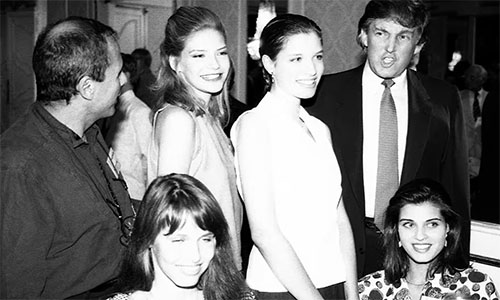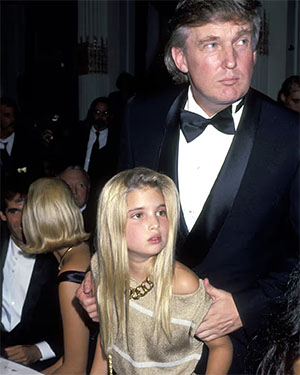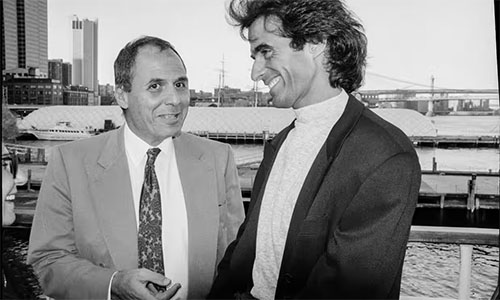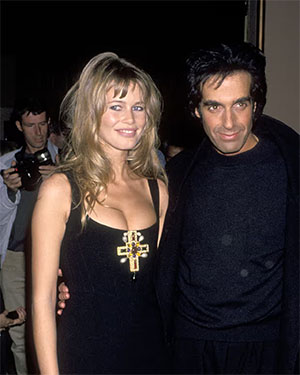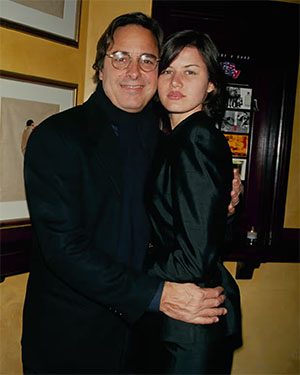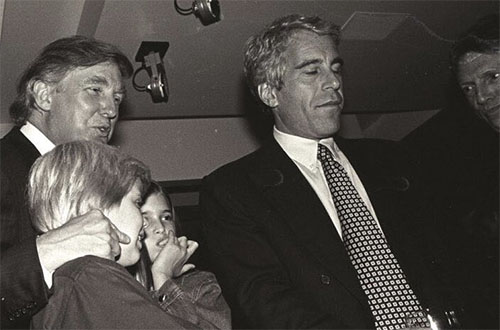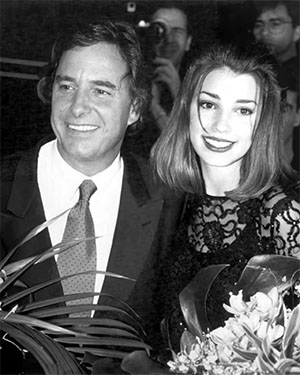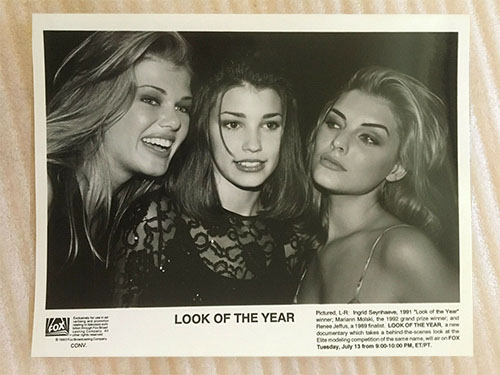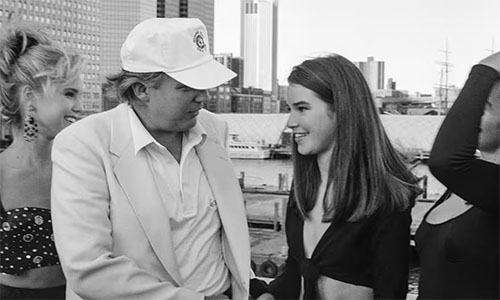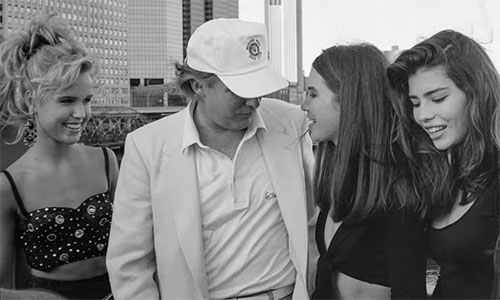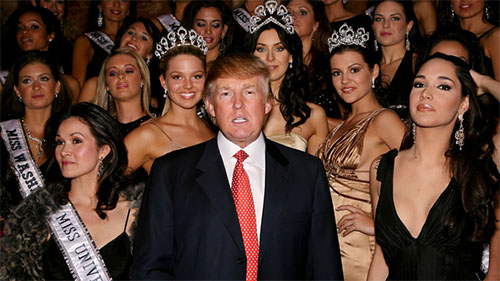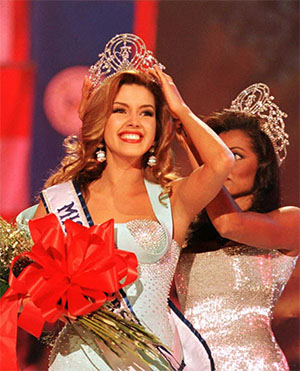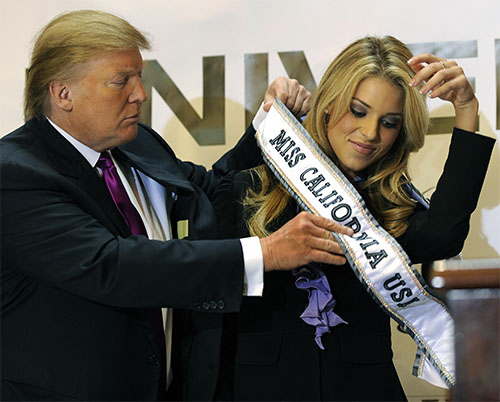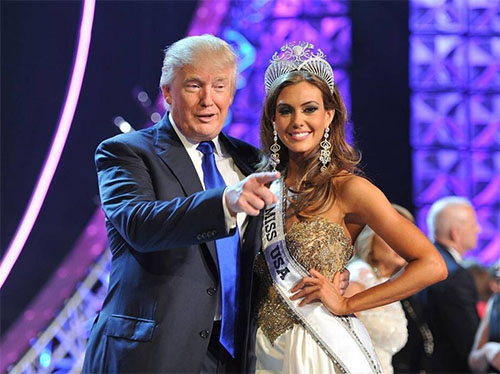Jeffrey Epstein: International Moneyman of Mystery
by Landon Thomas Jr.
New York Magazine
October 28, 2002
He comes with cash to burn, a fleet of airplanes, and a keen eye for the ladies — to say nothing of a relentless brain that challenges Nobel Prize–winning scientists across the country — and for financial markets around the world. Ever since the Post’s “Page Six” ran an item about the president’s late-September visit to Africa with Kevin Spacey and Chris Tucker – on his new benefactor’s customized Boeing 727 – the question of the day has been: Who in the world is Jeffrey Epstein?
It’s a life full of question marks. Epstein is said to run $15 billion for wealthy clients, yet aside from Limited founder Leslie Wexner, his client list is a closely held secret. A former Dalton math teacher, he maintains a peripatetic salon of brilliant scientists yet possesses no bachelor’s degree. For more than ten years, he’s been linked to Manhattan-London society figure Ghislaine Maxwell, daughter of the mysteriously deceased media titan Robert Maxwell, yet he lives the life of a bachelor, logging 600 hours a year in his various planes as he scours the world for investment opportunities. He owns what is said to be Manhattan’s largest private house yet runs his business from a 100-acre private island in St. Thomas.
Power on Wall Street has generally accrued to those who have made their open bids for it. Soros. Wasserstein. Kravis. Weill. The Sturm und Drang of their successes and failures has been played out in public. Epstein breaks the mold. Most everyone on the Street has heard of him, but nobody seems to know what the hell he is up to. Which is just the way he likes it.
“My belief is that Jeff maintains some sort of money-management firm, though you won’t get a straight answer from him,” says one well-known investor. “He once told me he had 300 people working for him, and I’ve also heard that he manages Rockefeller money. But one never knows. It’s like looking at the Wizard of Oz – there may be less there than meets the eye.”
Says another prominent Wall Streeter: “He is this mysterious, Gatsbyesque figure. He likes people to think that he is very rich, and he cultivates this air of aloofness. The whole thing is weird.”
The wizard that meets the eye is spare and fit; with a long jaw and a carefully coiffed head of silver hair, he looks like a taller, younger Ralph Lauren. A raspy Brooklyn accent betrays his Coney Island origins. He spends an hour and fifteen minutes every day doing advanced yoga with his personal instructor, who travels with him wherever he goes. He is an enthusiastic member of the Trilateral Commission and the Council on Foreign Relations.
He dresses casually — jeans, open-necked shirts, and sneakers — and is rarely seen in a tie. Indeed, those close to him say the reason he quit his board seat at the Rockefeller Institute was that he hated wearing a suit. “It feels like a dress,” he told one friend.
Epstein likes to tell people that he’s a loner, a man who’s never touched alcohol or drugs, and one whose nightlife is far from energetic. And yet if you talk to Donald Trump, a different Epstein emerges. “I’ve known Jeff for fifteen years. Terrific guy,” Trump booms from a speakerphone. “He’s a lot of fun to be with. It is even said that he likes beautiful women as much as I do, AND and many of them are on the younger side. No doubt about it — Jeffrey enjoys his social life.”Other footage showed Trump discussing the Access Hollywood, hot-mic footage which surfaced in 2016, briefly threatening to derail Trump’s election campaign.
In that tape,
Trump said: “I just start kissing them, it’s like a magnet, just kiss, I don’t even wait and when you’re a star they just let you do it. You can do anything. Grab ’em by the pussy. You can do anything.”
In his deposition, he said: “Well historically, that’s true with stars.”
He was asked: “It’s true you can grab them by the pussy?”
He said: “Well, if you look over the last million years, I guess that’s been largely true. Not always, but largely true. Unfortunately or fortunately.”“You consider yourself a star?”
“I think you can say that, yeah.”
-- Video of Trump confusing E Jean Carroll with ex-wife in deposition is released, BY Martin Pengelly, The Guardian
But beautiful women are only a part of it. Because here’s the thing about Epstein: As some collect butterflies, he collects beautiful minds. “I invest in people — be it politics or science. It’s what I do,” he has said to friends. And his latest prize addition is the former president. In his eyes, Clinton as a species represents the highest evolutionary form of the political animal. To be up close to him, as he was during the African journey, is akin to seeing the rarest of beasts on a safari. As he put it to a friend upon his return from Africa, “If you were a boxer at the downtown gymnasium at 14th Street and Mike Tyson walked in, your face would have the same look as these foreign leaders had when Clinton entered the room. He is the world’s greatest politician.”
“Jeffrey is both a highly successful financier and a committed philanthropist with a keen sense of global markets and an in-depth knowledge of twenty-first-century science,” Clinton says through a spokesman. “I especially appreciated his insights and generosity during the recent trip to Africa to work on democratization, empowering the poor, citizen service, and combating HIV/AIDS.”
Before Clinton, Epstein’s rare appearances in the gossip columns tended to be speculation as to the true nature of his relationship with Ghislaine Maxwell. While they are still friends, the English tabloids have postulated that Maxwell has longed for a more permanent pairing and that for undetermined reasons Epstein has not reciprocated in kind. “It’s a mysterious relationship that they have,” says society journalist David Patrick Columbia. “In one way, they are soul mates, yet they are hardly companions anymore. It’s a nice conventional relationship, where they serve each other’s purposes.”
Friends of the two say that Maxwell, whose social life has always been higher-octane than Epstein’s, lent a little pizzazz to the lower-profile Epstein. Indeed, at a party at Maxwell’s house, her friends say, one is just as apt to see Russian ladies of the night as one is to see Prince Andrew. The Oxford-educated Maxwell, described by many as a man-eater (she flies her own helicopter and was recently seen dining with Clinton at Nello’s on Madison Avenue), lives in her own townhouse a few blocks away. Epstein is frequently seen around town with a bevy of comely young women but there has been no boldfaced name to replace Maxwell. “You may read about Jeffrey in the social columns, but there is much more to him than that,” says Jeffrey T. Leeds of the private equity firm Leeds Weld & Co. “He’s a talented money manager and an extremely hardworking person with broad interests. Most unusual, though, is that in this media-obsessed age he is not in any sense a self-promoter.”
Born in 1953 and raised in Coney Island, Epstein went to Lafayette High School. According to his bio, he took some classes in physics at Cooper Union from 1969 to 1971. He left Cooper Union in 1971 and attended NYU’s Courant Institute, where he took courses in mathematical physiology of the heart, leaving that school, too, without a degree. Between 1973 and 1975, Epstein taught calculus and physics at the Dalton School.
By most accounts, he was something of a Robin Williams–in–Dead Poets Society type of figure, wowing his high-school classes with passionate mathematical riffs. So impressed was one Wall Street father of a student that he said to Epstein point-blank: “What are you doing teaching math at Dalton? You should be working on Wall Street — why don’t you give my friend Ace Greenberg a call.”
Epstein was in many respects the perfect candidate for Greenberg’s consideration. Greenberg, a senior partner at Bear Stearns at the time and a legendary trader in his own right, has long made it clear that it’s the hungry, brilliant guys lacking the fancy degrees that he favors at Bear. They even have an acronym: PSDs — poor, smart, and a deep desire to be rich. It was a description that fit Epstein to a T. He was a Brooklyn guy with a motor for a brain, and while he did love teaching, this close-up view of the rarefied Upper East Side life of his students’ gave him a taste for the big time.
So in 1976, he dropped everything and reported to work at Bear Stearns, where he started off as a junior assistant to a floor trader at the American Stock Exchange. His ascent was rapid.
At the time, options trading was an arcane and dimly understood field, just beginning to take off. To trade options, one had to value them, and to value them, one needed to be able to master such abstruse mathematical confections as the Black-Scholes option-pricing model. For Epstein, breaking down such models was pure sport, and within just a few years he had his own stable of clients. “He was not your conventional broker saying ‘Buy IBM’ or ‘Sell Xerox,’ ” says Bear Stearns CEO Jimmy Cayne. “Given his mathematical background, we put him in our special-products division, where he would advise our wealthier clients on the tax implications of their portfolios. He would recommend certain tax-advantageous transactions. He is a very smart guy and has become a very important client for the firm as well.”
In 1980, Epstein made partner, but he had left the firm by 1981. Working in a bureaucracy was not for him; what’s more, in rubbing up against ever greater sums of money during his time at Bear, he began to feel the need to grab his own piece of the action.
In 1982, according to those who know Epstein, he set up his own shop, J. Epstein and Co., which remains his core business today. The premise behind it was simple: Epstein would manage the individual and family fortunes of clients with $1 billion or more. Which is where the mystery deepens. Because according to the lore, Epstein, in 1982, immediately began collecting clients. There were no road shows, no whiz-bang marketing demos – just this: Jeff Epstein was open for business for those with $1 billion–plus.
His firm would be different, too. He was not here just to offer investment advice; he saw himself as the financial architect of every aspect of his client’s wealth — from investments to philanthropy to tax planning to security to assuaging the guilt and burdens that large sums of inherited wealth can bring on. “I want people to understand the power, the responsibility, and the burden of their money,” he said to a colleague at the time.
As a teacher at Dalton, he had witnessed firsthand the troubled attitudes of some of the poor little rich kids under his charge; at Bear, he had come to the realization that, counterintuitively, the more money you had, the more anxious you became. For a middle-class kid from Brooklyn, it just didn’t make sense.
From the get-go, his business was successful. But the conditions for investing with Epstein were steep: He would take total control of the billion dollars, charge a flat fee, and assume power of attorney to do whatever he thought was necessary to advance his client’s financial cause. And he remained true to the $1 billion entry fee. According to people who know him, if you were worth $700 million and felt the need for the services of Epstein and Co., you would receive a not-so-polite no-thank-you from Epstein.
It’s nice work if you can get it. Epstein runs a lean operation, and those close to him say that his actual staff — based here in Manhattan at the Villard House (home to Le Cirque); New Albany, Ohio; and St. Thomas, where he reincorporated his company seven years ago (now called Financial Trust Co.) — numbers around 150 and is purely administrative. When it comes to putting these billions to work in the markets, it is Epstein himself making all the investment calls — there are no analysts or portfolio managers, just twenty accountants to keep the wheels greased and a bevy of assistants — many of them conspicuously attractive young women — to organize his hectic life. So assuming, conservatively, a fee of .5 percent (he takes no commissions or percentages) on $15 billion, that makes for a management fee of $75 million a year straight into Jeff Epstein’s pocket. Nice work indeed.
It has been rumored that Linda Wachner and David Rockefeller have been clients, too, but both parties deny any such relationship. What’s more, who ever heard of a financial adviser turning down $500 million accounts? All the speculation and mystery has proved fertile ground for some alternative Jeffrey Epstein stories – the most bizarre of which has him playing the piano (he is classically trained) for high rollers in a Manhattan piano bar in the mid-eighties.
Another focus of curiosity is the relationship that Epstein has with his patron and mentor Leslie Wexner, founder and chairman of the Columbus, Ohio–based Limited chain of women’s-clothing stores. Wexner, who is said to be worth more than $2.5 billion by Forbes, became an Epstein client in 1987. “It’s a weird relationship,” says another Wall Streeter who knows Epstein. “It’s just not typical for someone of such enormous wealth to all of a sudden give his money to some guy most people have never heard of.” The Wexner-Epstein relationship is indeed a multifaceted one.
Given the secrecy that envelops Epstein’s client list, some have speculated that Wexner is the primary source of Epstein’s lavish life — but friends leap to his defense. “Let me tell you: Jeffrey Epstein has other clients besides Wexner. I know because some of them are my clients,” says noted m&a lawyer Dennis Block of Cadwalader, Wickersham & Taft. “I sent him a $500 million client a few years ago and he wouldn’t take him. Said the account was too small. Both the client and I were amazed. But that’s Jeffrey.”
Epstein’ s current residence in Manhattan — a 45,000-square-foot eight-story mansion on East 71st Street — was originally bought by Wexner for $13 million in 1989. Wexner poured many millions into a full gut renovation, then turned it over to Epstein in 1995 after he got married. One story has Epstein paying only a dollar for it, though others say he paid full market price, which would have been in the neighborhood of $20 million. Epstein then undertook his own $10 million gut renovation (special features: closed-circuit TV and a heated sidewalk in front of the house for melting snow), saying to friends: “I don’t want to live in another person’s house.”
There are other houses as well, including a sweeping villa in Palm Beach and a custom-built 51,000-square-foot castle in Santa Fe. Said to be the largest house in the state, the latter sits atop a hill on a 45,000-acre ranch. He had it built because of the month or so he found himself spending there, talking elementary particle physics with his friend Murray Gell-Mann, a Nobel Prize–winning physicist and co-chair of the science board at the Santa Fe Institute.
Epstein also owned a grand house (he has since sold it) near Wexner’s opulent manse at the center of the Limited magnate’s high-end housing development in New Albany, Ohio. New Albany was a lush sprawl of farmland on the outskirts of Columbus that Wexner, starting in 1988, turned into a rich village of multimillion-dollar Georgian homes surrounding a Jack Nicklaus–designed golf course. It was a massive development project, financed largely by Wexner himself. Epstein was a general partner in the real-estate holding company, called New Albany Property, despite putting only a few million dollars of capital into the project.
“Before Epstein came along in 1988, the financial preparations and groundwork for the New Albany development were a total mess,” says Bob Fitrakis, a Columbus-based investigative journalist who has written extensively on Wexner and his finances. “Epstein cleaned everything up, as well as serving Wexner in other capacities — such as facilitating visits to Wexner’s home of the crew from Cats and organizing a Tony Randall song-and-dance show put on in Columbus.” Wexner declines to talk about his relationship with Epstein, but it is clearly one that continues to this day. Not that it helped Epstein in any way to land Clinton. Wexner is a staunch Republican donor, and Epstein, aside from a small contribution to the president’s legal-defense fund, has given more to the likes of former senator Al D’Amato.
What attracted Clinton to Epstein was quite simple: He had a plane (he has a couple, in fact — the Boeing 727, in which he took Clinton to Africa, and, for shorter jaunts, a black Gulfstream, a Cessna 421, and a helicopter to ferry him from his island to St. Thomas). Clinton had organized a weeklong tour of South Africa, Nigeria, Ghana, Rwanda, and Mozambique to do what Clinton does. So when the president’s advance man Doug Band pitched the idea to Epstein, he said sure. As an added bonus, Kevin Spacey, a close friend of Clinton’s, and actor Chris Tucker came along for the ride.
While Epstein got an intellectual kick out of engaging African finance ministers in theoretical chitchat about economic development, the real payoff for him was observing Clinton in his métier: talking HIV/aids policy with African leaders and soaking up the love from Cape Town to Lagos.
Epstein brings a trophy-hunter’s zeal to his collection of scientists and politicians. But the real charge for him is in seeing these guys work it. Like former Democratic Senate leader George Mitchell, for example. In Epstein’s mind, Mitchell is the world’s greatest negotiator, based on his work in Ireland and the Middle East. So he wrote the senator a bunch of checks. Says Mitchell: “He has supported some philanthropic projects of mine and organized a fund-raiser for me once. I would certainly call him a friend and a supporter.”
But it is his covey of scientists that inspires Epstein’s true rapture. Epstein spends $20 million a year on them — encouraging them to engage in whatever kind of cutting-edge research might attract their fancy. They are, of course, quite lavish in their praise in return. Gerald Edelman won the Nobel Prize for physiology and medicine in 1972 and now presides over the Neurosciences Institute in La Jolla. “Jeff is extraordinary in his ability to pick up on quantitative relations,” says Edelman. “He came to see us recently. He is concerned with this basic question: Is it true that the brain is not a computer? He is very quick.”
Then there is Stephen Kosslyn, a psychologist at Harvard. Epstein flew up to Kosslyn’s laboratory in Cambridge this year to witness an experiment that Kosslyn was conducting and Epstein was funding. Namely: Is it true that certain Tibetan monks are capable of holding a distinct mental image in their minds for twenty minutes straight? “We disproved the thesis,” says Kosslyn. “Jeff was on his cell phone most of the time — he actually wanted to short the Tibetan market, because he thought the monk was so stupid. He is amazing. Like a honeybee — he talks to all these different people and cross-pollinates. Just two months ago, I was talking to him about a new alternative to evolutionary psychology. He got excited and sent me a check.”
Epstein has a particularly close relationship with Martin Nowak, an Austrian biology and mathematics professor who heads the theoretical-biology program at the Institute for Advanced Study at Princeton. Nowak is examining how game theory can be used to answer some of the basic evolutionary questions — e.g., why, in our Darwinian society, does altruistic behavior exist? Epstein talks to Nowak about once a week and flies him around the country to his various homes to deliver impromptu lectures. Over the past three years, he has written $500,000 worth of checks to fund Nowak’s research. This past February, Epstein had Nowak over for dinner at the 71st Street townhouse. It was just the two of them (not including the wait staff), and Nowak, making use of a blackboard in the formal dining room, delivered a two-hour highly mathematical description of how language works.
After dinner, Epstein asked if Nowak wanted to meet up with his new friend President Clinton, and off they went to a nearby deli, where Clinton regaled the starstruck former Oxford professor with tales from his own Oxford days. “Jeffrey has the mind of a physicist. It’s like talking to a colleague in your field,” says Nowak. “Sometimes he applies what we talk about to his investments. Sometimes it’s for his own curiosity. He has changed my life. Because of his support, I feel I can do anything I want.”
Danny Hillis, an MIT-educated computer scientist whose company, Thinking Machines, was at the forefront of the supercomputing world in the eighties, and who used to run R&D at Walt Disney Imagineering, thinks Epstein is actually using scientific knowledge to beat the markets. “We talk about currency trading — the euro, the real, the yen,” he says. “He has something a physicist would call physical intuition. He knows when to use the math and when to throw it away. If I had acted upon all the investment advice he has been giving me over the years, I’d be calling you from my Gulfstream right now.”
On the 727 these days, he has been reading a book by E. O. Wilson, the eminent scientist and originator of the field of sociobiology, called Consilience, which makes the case that the boundaries between scientific disciplines are in the process of breaking down. It’s a view Epstein himself holds. He wrote recently to a scientist friend of his: “The behavior of termites, together with ants and bees, is a precursor to trust because they have an extraordinary ability to form relationships and sophisticated social structures based on mutual altruism even though individually they are fundamentally dumb. Money itself is a derivative of trust. If we can figure out how termites come together, then we may be able to better understand the underlying principles of market behavior — and make big money.”
So how do termite grouping patterns fare as an investment strategy? Again, facts are hard to come by. A working day for Epstein starts at 5 a.m., when he gets up and scours the world markets on his Bloomberg screen — each of his houses, in New York, St. Thomas, Palm Beach, and New Mexico, as well as the 727, is equipped with the necessary hardware for him to wake up, roll out of bed, and start trading. He will put some calls in to his private banker at JPMorgan to get a reading as to how wealthy investors — the best gauge of market sentiment, he believes — are reacting to the market’s movements. Then he will call currency traders in Europe. On a given day, he will spend ten hours or so on the phone — after all, he is running $15 billion essentially by himself.
Strangely enough, given his scientific obsessions, he is a computer-phobe and does not use e-mail. “I like to hear voices and see faces when I interact,” he has said. Given the huge sums he has to invest, he focuses on assets with extremely high liquidity, like currencies — though he dabbles in commodities and real estate as well. Those who know him say he is an impulsive, quick-to-change-his-mind trader, still governed by Ace Greenberg’s trader’s maxim: If the stock is down 10 percent, sell it. He has been on the short side of the Brazilian real, and those close to him say bets there have paid off in spades. He recently took a long position on the euro before its rebound on the basis that Europeans were too proud to see their currency sink any lower against the dollar. His next targets: an across-the-board short of the German stock exchange and a possible attack on the Hong Kong dollar peg in light of the recent disclosure of North Korea’s nuclear-weapons program.
None of this is investment rocket science, but getting the direction and the timing right, no matter how conventional the investment idea, can spin large money for an investor. Before taking a big position, Epstein will usually fly to the country in question. He recently spent a week in Germany meeting with various government officials and financial types, and he has a trip to Brazil coming up in the next few weeks. On all of these trips, he flies alone in his commercial-jet-size 727.
Friends of Epstein say he is horrified at the recent swell of media attention around him (Vanity Fair is preparing a megaprofile, and the Villard House office has had a barrage of calls from other media outlets). He has never granted a formal interview, and did not offer one to this magazine, nor has his picture appeared in any publication. Yet for one so obsessive about his privacy, one wonders — didn’t he realize that flying Clinton and Spacey around Africa was going to blow his cover? As he said to a friend: “If my ultimate goal was to stay private, traveling with Clinton was a bad move on the chessboard. I recognize that now. But you know what? Even Kasparov makes them. You move on.”
